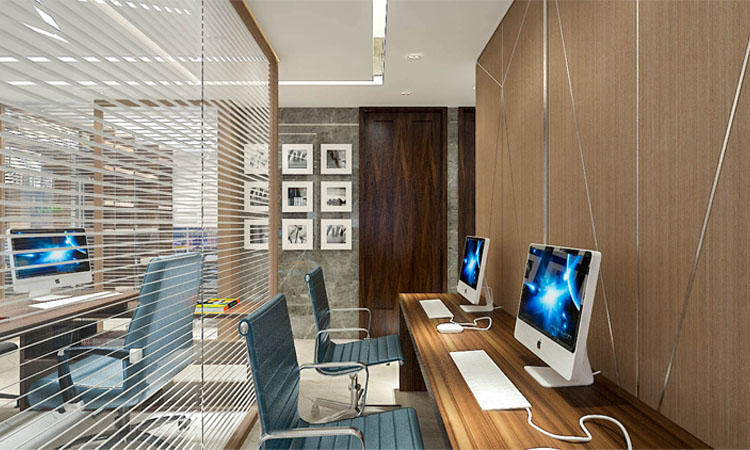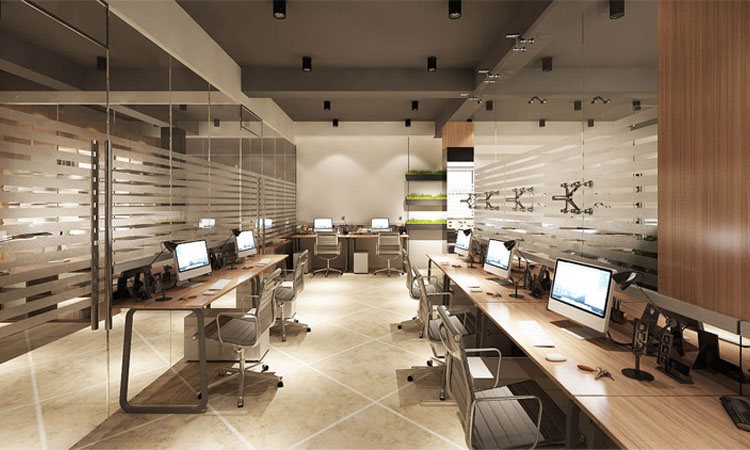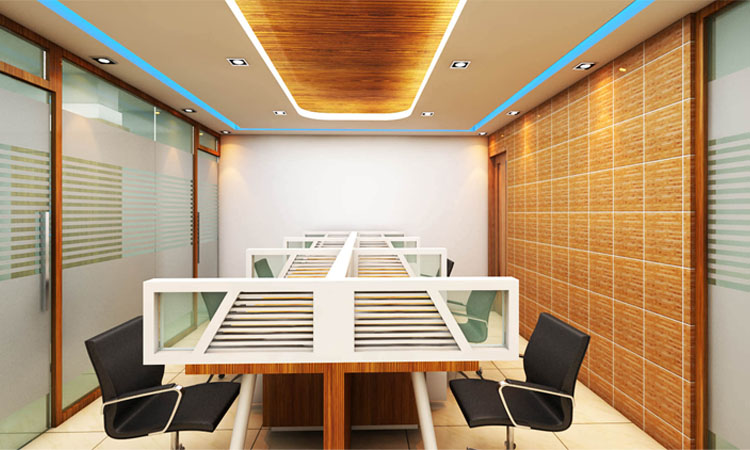Office interior design has evolved beyond mere functionality to become a strategic tool for enhancing productivity, creativity, and employee well-being. A well-designed office not only reflects the company’s culture and values but also fosters a positive work environment that supports collaboration and innovation. This article explores the essential elements of office interior design, innovative trends, and practical tips to create inspiring and efficient workspaces.
Essential Elements of Office Interior Design

Functional Layout and Spatial Planning
Effective office design begins with thoughtful spatial planning and layout. Understanding the workflow and communication needs within the organization helps in creating functional zones for different activities. Open-plan layouts promote interaction and teamwork, while private offices or quiet areas cater to tasks requiring concentration. Flexibility in space allocation allows for easy adaptation to changing business needs and enhances overall efficiency.
Ergonomic Considerations
Prioritizing ergonomic design contributes to employee health, comfort, and productivity. Ergonomic furniture, such as adjustable desks and supportive chairs, supports proper posture and reduces the risk of musculoskeletal disorders. Customizable workstations that accommodate individual preferences for monitor height, keyboard position, and lighting enhance employee satisfaction and well-being. Investing in ergonomic solutions demonstrates a commitment to employee welfare and fosters a conducive work environment.
Lighting Design
Lighting plays a crucial role in creating a functional and inviting workspace. Natural light is preferred for its positive effects on mood and productivity. Maximizing natural light through large windows and open spaces can reduce energy costs and enhance employee well-being. Supplementing natural light with adjustable artificial lighting allows for flexibility in creating different atmospheres for various tasks. Proper lighting design considers both functionality and aesthetics, ensuring adequate illumination throughout the office.
Color Psychology
Color selection influences the ambiance and mood within the office environment. Neutral colors, such as white, gray, and beige, provide a clean and professional backdrop. Accent colors can be strategically used to stimulate creativity, boost energy levels, or create a calming effect. Understanding the psychological effects of colors helps in creating a cohesive and inspiring workspace that aligns with the company’s brand and culture.
Acoustic Management
Managing noise levels is essential for maintaining focus and productivity in open-plan offices. Acoustic solutions, such as sound-absorbing materials, carpets, and ceiling panels, help reduce noise distractions and create a more comfortable work environment. Designating quiet zones or incorporating soundproofing measures in meeting rooms and collaborative spaces enhances privacy and supports concentrated work tasks.
Innovative Trends in Office Interior Design

Biophilic Design Integration
Biophilic design incorporates natural elements and patterns into the office environment to enhance employee well-being and connection with nature. Integrating plants, green walls, natural materials like wood and stone, and views of nature can improve air quality, reduce stress levels, and boost creativity and productivity. Biophilic design principles promote a healthier and more inspiring work environment that resonates with employees.
Flexible Workspaces
Flexible office layouts accommodate diverse work styles and preferences. Agile workspaces feature modular furniture and adaptable configurations that support collaboration, individual work, and team meetings. Flexibility in space design allows for easy reconfiguration based on specific tasks or project requirements, fostering creativity, and improving efficiency. Flexible workspaces also support remote work initiatives and accommodate the evolving needs of a dynamic workforce.
Sustainability Practices
Embracing sustainable design practices demonstrates corporate responsibility and environmental stewardship. Using eco-friendly materials, such as recycled wood and low-VOC paints, reduces carbon footprint and promotes indoor air quality. Energy-efficient lighting systems, smart thermostats, and sustainable furniture choices contribute to long-term operational savings and environmental conservation. Sustainable office design aligns with corporate values, enhances brand reputation, and attracts environmentally conscious employees and clients.
Practical Tips for Effective Office Design

Employee Engagement in the Design Process
Engaging employees in the design process promotes inclusivity and ensures that the office environment meets their needs and preferences. Conducting surveys, focus groups, and workshops allows employees to provide valuable insights into workspace requirements, layout preferences, and desired amenities. Collaborating with employees fosters a sense of ownership and enhances overall satisfaction and productivity in the workplace.
Technology Integration
Integrating advanced technologies enhances workplace efficiency and connectivity. Providing robust IT infrastructure, wireless connectivity, and integrated communication systems supports seamless collaboration and remote work capabilities. Smart office solutions, such as IoT devices for lighting and temperature control, optimize energy usage and enhance employee comfort. Leveraging technology in office design improves operational efficiency and supports innovative work practices in a digital-driven economy.
Wellness Initiatives
Promoting employee well-being through wellness initiatives reinforces a healthy work-life balance. Designing ergonomic workstations, incorporating breakout areas for relaxation, and providing access to fitness facilities or wellness programs support physical and mental health. Creating designated spaces for meditation, quiet reflection, or social interaction fosters a supportive and inclusive workplace culture. Prioritizing employee wellness enhances morale, reduces absenteeism, and boosts overall productivity.
Conclusion
Office interior design is a strategic investment that impacts employee satisfaction, productivity, and organizational success. By focusing on functional layout, ergonomic comfort, lighting design, color psychology, acoustic management, and innovative trends such as biophilic design, flexible workspaces, sustainability practices, and technology integration, businesses can create inspiring and efficient work environments. Investing in thoughtful office design not only enhances the physical workspace but also contributes to a positive corporate culture and competitive advantage in attracting and retaining top talent.




